Case Details
02-Apr 24 Zebra Tsavo East NP
Causes Juvenile male common zebra with an open wound on the left hind leg.
04-Apr 24 Zebra Tsavo East NP Snared
09-Apr 24 Elephant Tsavo East NP
09-Apr 24
Causes
male common zebra with a winch wire snare around the neck. Successfully treated
elephant bull with a pus-oozing wound in the inguinal region.
treated 10-Apr 24
Taita Hills HWC
13-Apr 24 Elephant Tsavo West NP
Causes
female impala with her right forelimb stuck in a tin can. Successfully treated
elephant bull stuck in a mud filled drainage ridge by the side of the road.
elephant bull with a fight wound at the base of the right tusk.
Causes Adult elephant bull with a swelling on the left flank area.
treated 26-Apr 24 Buffalo Tsavo East NP HWC Relocation of 2 sub-adult female buffaloes seen roaming in a community area. Task successful 28-Apr 24 Impala Tsavo East NP
Species
Found Reason for Intervention Outcome
Date
Area
Natural
Died. Euthanized
Adult
Natural
Adult
Successfully treated
Natural
Successfully
Impala Taita Hills
Causes Adult female impala seen limping by staff at Taita Saltlick Lodge.
Impala
Adult
Natural
Successfully
Rescue Adult
Task successful 18-Apr 24 Elephant Mtito Andei Area
Adult
treated
Task successful
Natural
Died.
19-Apr 24 Elephant Kuranze Ranch HWC Young adult elephant bull stuck in a pit full of water.
22-Apr 24 Elephant Tsavo East NP
Successfully
Natural Causes Lame adult female impala with a fractured left forelimb.
Euthanized 29-Apr 24 Waterbuck Voi Wildlife Lodge Natural Causes Injured adult male waterbuck spotted near the lodge swimming pool. Prognosis poor
April 2024


SWT/KWS Tsavo Mobile Vet Unit Treatment Locations
A SWT/KWS De-snaring Unit reported sighting a male zebra foal that was limping due to an open wound on the left hind limb.
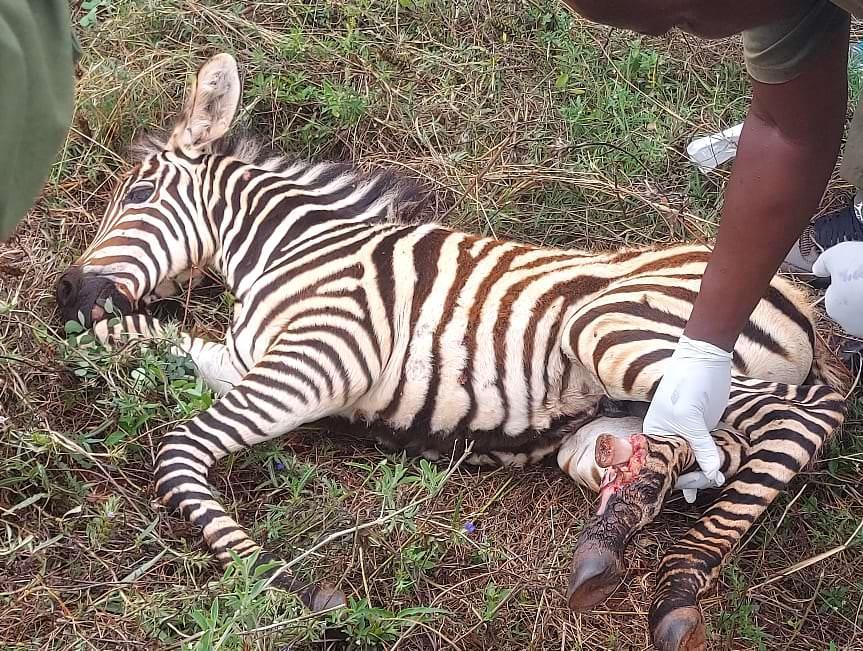

Immobilisation, examination and treatment
The foal was immobilized with a combination of 1mg Etorphine hydrochloride and 30mg Azaperone delivered remotely in a 1.5 cc Dan-inject dart. The animal was darted from the vehicle, and it took 5 minutes for the drugs to take effect.
Examination revealed there was an open, complete Salter-Harris type I fracture of the 3rd metatarsus on the left hind limb. The foal was clearly in pain and his prognosis was grave. Therefore, he was put to rest to alleviate further pain and suffering.
Prognosis
The zebra foal had a grave prognosis given the severity of his injuries. He was put to rest to alleviate further pain and suffering.
Case 1 – 02nd April 2024
Zebra Natural Causes
Ndii Area, Tsavo East NP
An adult male common zebra with a winch wire snare around the neck was reported by a SWT/KWS Desnaring Unit.


Immobilisation, examination and treatment
The snared zebra was darted from a vehicle and immobilized with a combination of 7mg Etorphine and 60mg Azaperone delivered in a 3 cc Dan-inject dart. It took 6 minutes for the drugs to take effect.
The winch wire was loosely attached around the animal’s neck. Luckily, it had not inflicted any visible injuries on the animal. The wire snare was immediately removed then anaesthesia was reversed with 100mg Naltrexone hydrochloride given intravenously via the jugular vein. He stood 1-minute post-reversal and joined his herd that was grazing nearby.
Prognosis
The zebra has a good prognosis.


April
Case 2 – 04th
2024
Zebra Snared
Ndii Area, Tsavo East NP
Natural Causes
Ngutuni Area, Tsavo East NP
While on patrol, a SWT pilot spotted an adult elephant bull with a pus oozing wound in his inguinal region.
Immobilisation, examination and treatment
The bull was successfully anaesthetized with 20mg Etorphine hydrochloride delivered in a 3cc Dan inject dart. Darting was done from the vehicle, and full anaesthesia was achieved after 8 minutes. Examination revealed a deep septic wound in the inguinal area close to the medial surface of the left hind foot, there was also moderate inflammation of the surrounding tissues. Devitalized tissues were surgically removed from wound using curators, this was followed by flushing with Hydrogen peroxide, thoroughly rinsing with clean water, and infusing the wound with Iodine. The wound was thereafter packed with antibiotic pessaries, green clay and a topical antibiotic spray applied. Additionally, Amoxicillin antibiotics and anti-inflammatory medication were administered parenterally. Anaesthesia was reversed with 200mg Naltrexone hydrochloride given intravenously via a prominent ear vein. The bull stood 3 minutes later and walked towards several bulls that were waiting nearby.
Prognosis
The elephant bull has a good prognosis


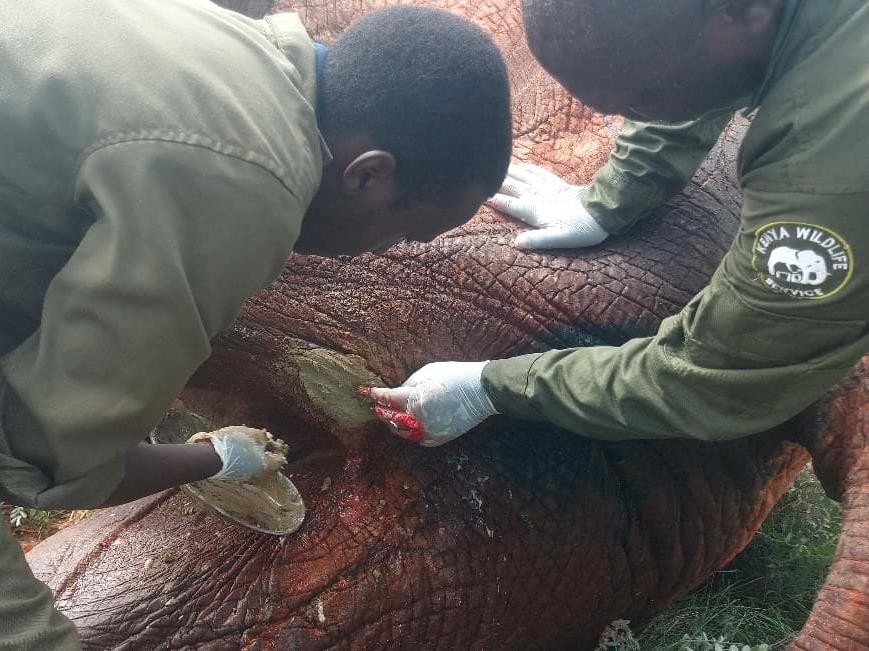

3 – 09th April 2024 Elephant
Case
Impala Natural Causes
Taita Hills Wildlife Sanctuary
Staff at Taita Saltlick Lodge spotted a limping impala ewe with a wound on the left forelimb.
Immobilisation, examination and treatment
The impala was darted from a vehicle and immobilized with 4mg Etorphine hydrochloride and 50mg Azaperone. The drugs took effect after 12 minutes.
Upon examination, it was found that impala had suffered a fracture on the left forelimb that was healing with a slightly angular deformation. Topical antibiotic spray was applied on the healing wound, then antiinflammatories, antibiotics and anti-parasitic medication were administered parenterally. The ewe was revived with 70mg Naltrexone hydrochloride given intravenously via the jugular vein, she stood 2 minutes later and dashed away.
Prognosis
The impala has a good prognosis

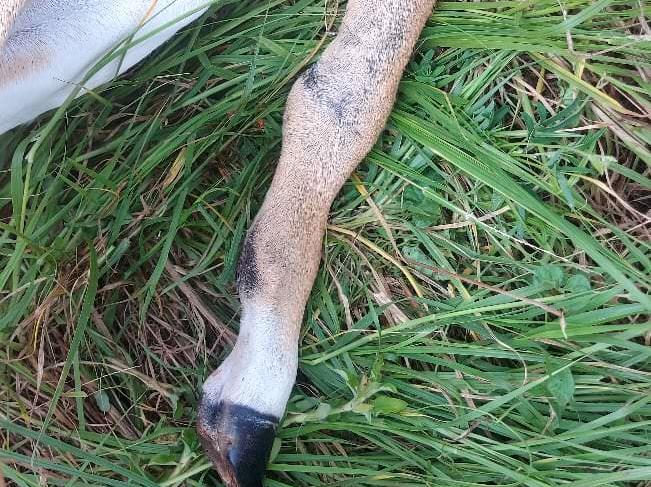
Case
April 2024
4 – 09th
Impala
Human-Wildlife Conflict Taita Hills Wildlife Sanctuary
This adult female impala was spotted limping by lodge staff. Her hoof was stuck in a tin can, and she couldn’t get it off on her own.


Immobilisation, examination and treatment
She was immobilized with a combination of 4mg Etorphine hydrochloride and 50mg Azaperone delivered in a 1.5 cc Dan-inject dart. Darting was done from a vehicle, and she was fully anesthetized 6 minutes later. The metal can was on the right fore limb at the level of the second phalanx, and it had inflicted a deep wound which had become septic and had begun to necrotize. The metal can was carefully removed to avoid inflicting any further injuries. The wound was cleaned with clean water, debrided with Hydrogen peroxide, and infused with Iodine. Topical antibiotic spray was thereafter applied on the wound. Amoxicillin antibiotics and antiinflammatories were administered parenterally before anaesthesia was reversed with 70mg Naltrexone hydrochloride given intravenously via the jugular vein. She stood 2 minutes post-reversal and joined her calf that was waiting nearby.
Prognosis
The impala has a good prognosis

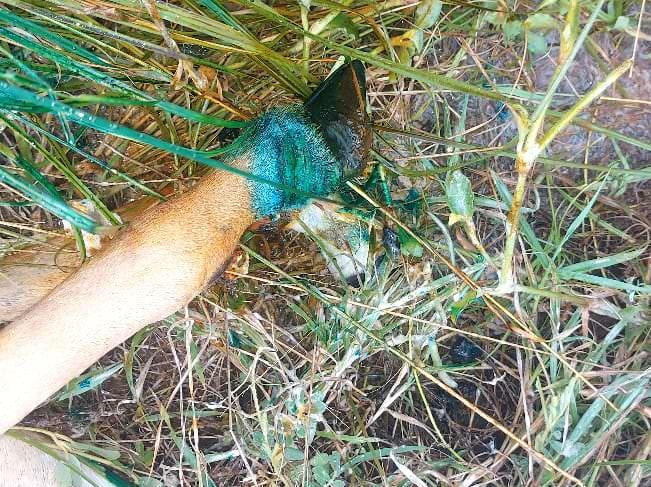
5 – 10th April 2024
Case
Elephant Rescue
Maktau Area, Tsavo West N.P.
KWS rangers spotted a recumbent adult elephant bull in a mud filled drainage ridge by the side of the road. There were clear signs that the bull had been there for more than 12 hours.
Rescue
The bull was in good body condition, and it did not have any visible injuries. Despite being stuck in the mud for a long period, he was still making attempts to rise by paddling and trying to lift his head.
The Veterinary team requested KWS management to avail a road maintenance bulldozer to level the ridge so as to make it easier for him to stand. Once the bulldozer was onsite, the area was quickly levelled, and the bull was re-positioned in sternal recumbency. The bull stood immediately thereafter and slowly walked away.

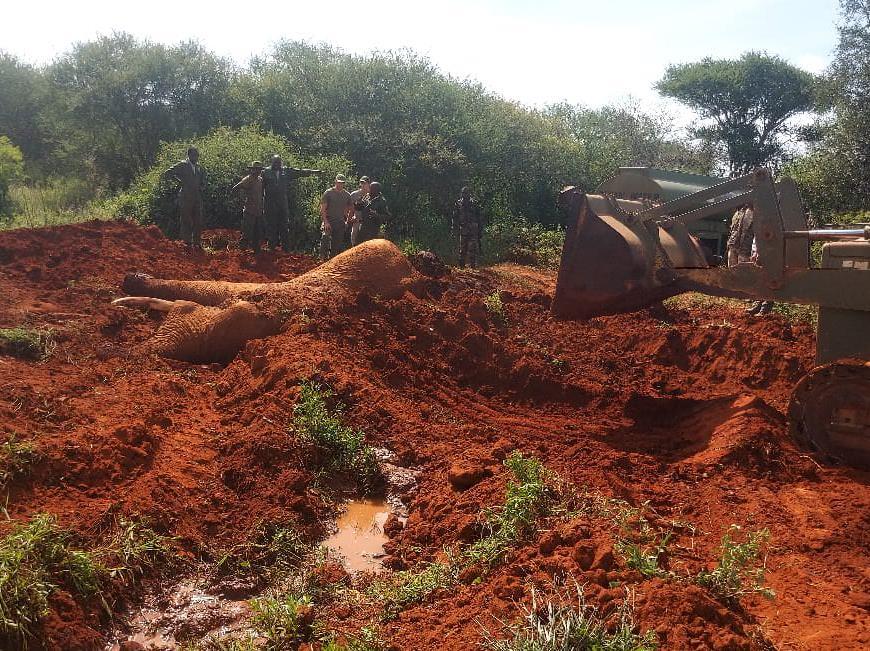


6
13th April 2024
Case
–
Case
Elephant
Natural Causes
Mtito Andei Area
While on routine patrol, the SWT/KWS Dog Unit spotted an injured adult elephant bull. The bull had a fight wound at the base of his right tusk.
Immobilisation, examination and treatment
The bull was darted from a vehicle and successfully immobilized with 18mg Etorphine hydrochloride delivered in a 3 cc Dan-inject dart. Full anaesthesia was achieved after 7 minutes.
Examination revealed a deep septic fight wound at the base of the right tusk. The wound was thoroughly cleaned with water and devitalized tissues incised. Thereafter, it was flushed with Hydrogen peroxide, rinsed with water, infused with tincture of Iodine, and packed with green clay. Antibiotic spray was applied topically and Amoxicillin antibiotics and Flunixin meglumine anti-inflammatories were administered parenterally. He was revived with 200 mg Naltrexone hydrochloride given intravenously via a prominent ear vein.
Prognosis
The elephant bull has a good prognosis.


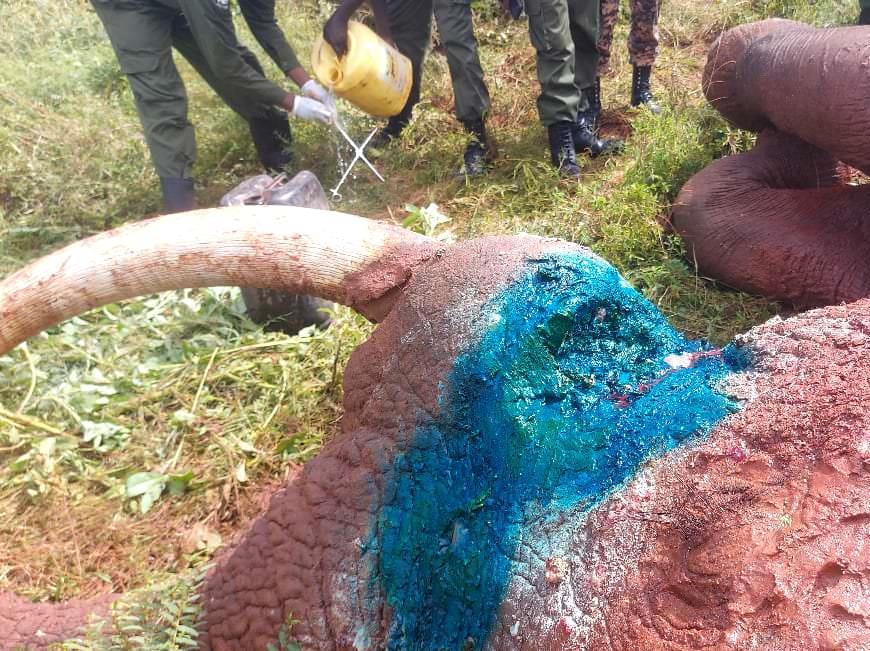

7 – 18th April
2024
Kuranze Ranch
KWS rangers patrolling Kuranze ranch spotted a young elephant bull trapped in deep pit full of water. The SWT/KWS Tsavo Veterinary Unit teamed up with SWT and KWS field officers for the rescue.
Rescue
An advance team comprising members of the veterinary unit and SWT staff flew to the area to assess the situation and pump out as much water from the well as possible to prevent the elephant from drowning. Other members of the veterinary unit and SWT teams followed by road with more pumps and other equipment. A heavy-duty crane was availed to lift the bull out of the deep pit. Another crane was also on standby to lower 2 personnel into the well to secure hoisting straps on the elephant’s limbs. The bull was immobilized using 13 mg Etorphine hydrochloride, it took 4 minutes for the drug to take effect. Once the straps were secured on the elephant’s limbs, the animal was carefully hoisted out of the pit and placed a safe distance from the well The bull’s vitals were checked, and steroidal anti-inflammatories, metabolic stimulants, and Amoxicillin antibiotics were administered parenterally. Anaesthesia was reversed with 200mg Naltrexone hydrochloride given intravenously via a prominent ear vein. The bull stood and walked away 4 minutes later.




8 – 19th April 2024
Case
Elephant Rescue
Natural Causes
Satao Area, Tsavo East National Park
An adult elephant bull with a swelling on the left flank area was spotted by the SWT pilot on routine patrol.
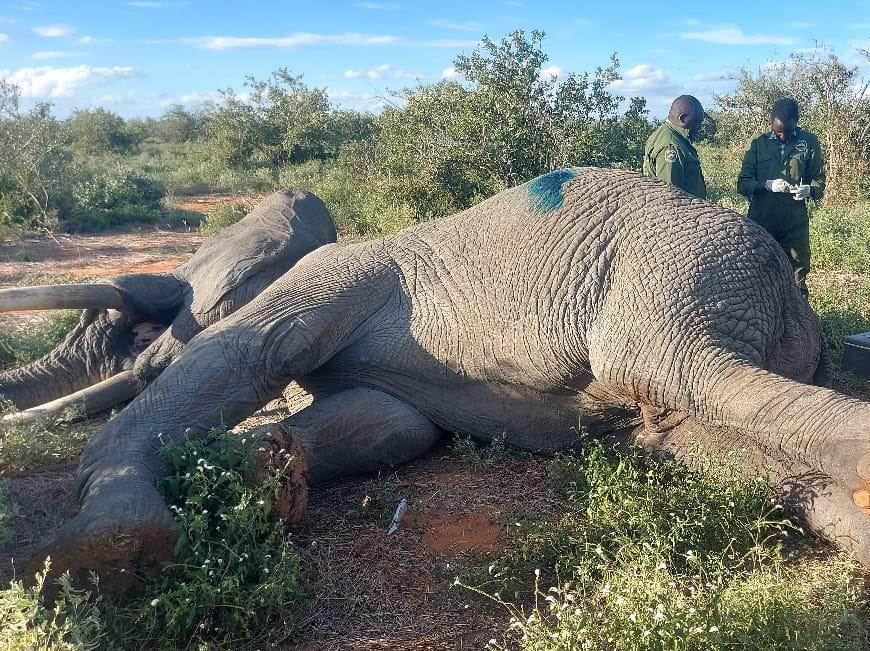
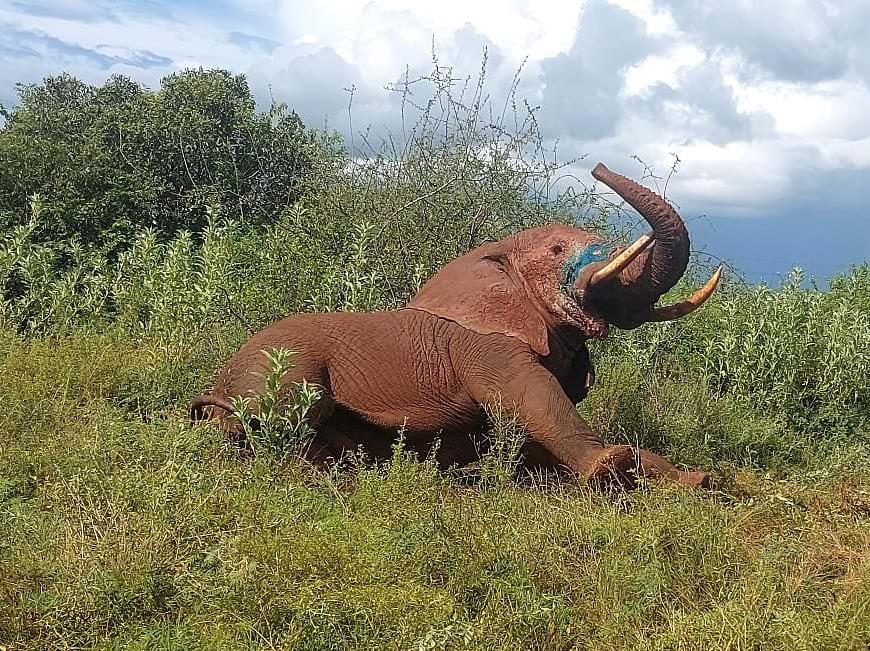
Immobilisation, examination and treatment
The elephant bull was darted from a vehicle and immobilized with 20mg Etorphine hydrochloride delivered in a 3 cc Dan-inject dart. Full anaesthesia was achieved after 7 minutes.
Examination revealed that the swelling was fibrous tissue that had formed as part of the wound healing process. No other injuries were observed. The bull received antibiotics, anti-inflammatories, and metabolic stimulants parenterally before anaesthesia was reversed with 200 mg Naltrexone hydrochloride given intravenously via a prominent ear vein. The elephant bull stood and walked away 4 minutes later.
Prognosis
The elephant bull has a good prognosis.
Case 9 – 22nd April 2024
Elephant
Buffalo
Human-Wildlife Conflict
Sagalla Area, Tsavo East NP
Members of the community around Sagalla reported sighting 3 Cape buffaloes roaming in the area. These sightings were reported to KWS management.
Immobilisation and relocation
2 young cows were found and immobilized successfully with a combination of 8mg Etorphine and 50 mg Azaperone in 1.5cc Dan-inject darts. The animals were darted from a vehicle, and it took 5 and 7 minutes respectively to achieve full anaesthesia.
The cows were loaded to a waiting truck using a wheeled shovel. They were transported to Tsavo East National park while under anaesthesia and released close to Voi gate. Anaesthesia was reversed simultaneously for both animals at the release site with 150mg Naltrexone each delivered intravenously via the jugular vein. They both stood 2 minutes post-reversal.


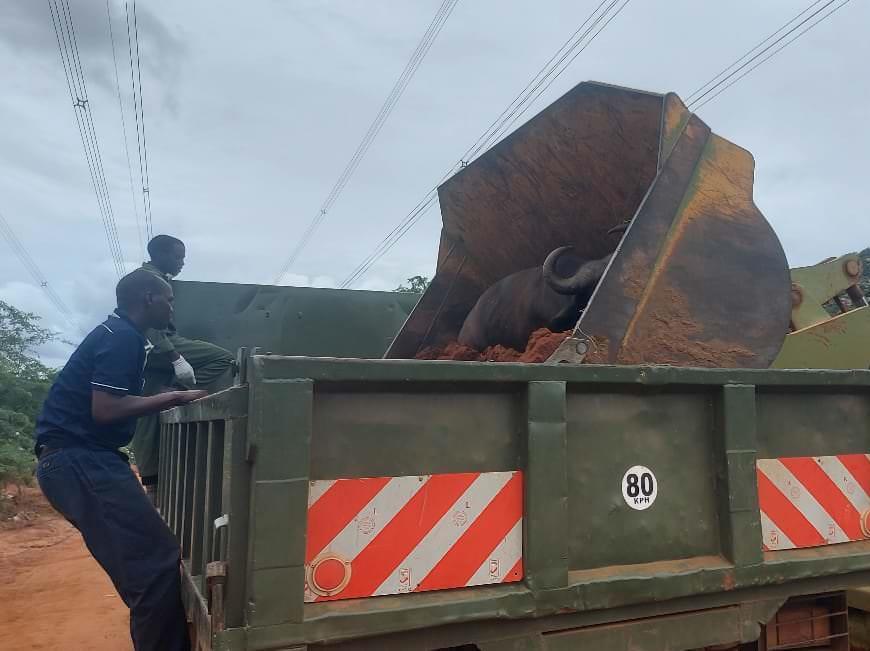

10 – 26th April 2024
Case
Impala
Natural Causes
Satao Area, Tsavo East NP
An adult female impala was seen limping due to a fractured right forelimb. The SWT/KWS Tsavo Mobile Veterinary Unit was notified and responded immediately.

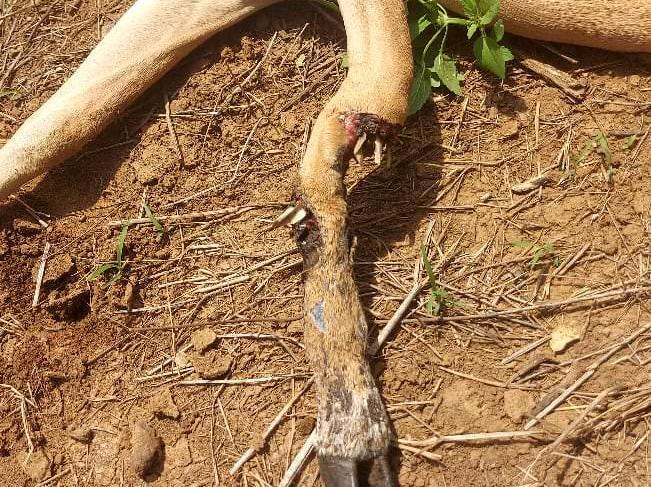
Immobilisation, examination and treatment
The ewe was immobilized with a combination of 4mg Etorphine and 40mg Azaperone in a 1.5 cc Dan-inject dart. Darting was done on foot, and it took 7 minutes for the drugs to achieve full effect.
Examination revealed the impala had a complete open comminuted fracture of the metacarpals on the right forelimb. The wound was septic, and her prognosis was grave. Given the foregoing, the impala was put to rest to alleviate further pain and suffering.
Prognosis
The impala had a poor prognosis given the severity of its injuries It was put to rest to alleviate further pain and suffering.
Case 11 – 28th April 2024
Waterbuck Natural Causes Voi Wildlife Lodge
Staff at Voi Wildlife Lodge reported seeing an adult male waterbuck close to the swimming pool. The animal was reluctant to move.
Immobilisation, examination and treatment
The animal was approached on foot and darted with a combination of 7mg Etorphine and 70mg Azaperone in a 3 cc Dan-inject dart. It took 5 minutes for the drugs to take effect.
Examination revealed that the waterbuck was in poor body condition with a score of 2 in a scale of 1-5 (1 being poor while 5 is good). Fresh wounds on the right shoulder area and along the spine were observed. The wounds were cleaned, disinfected with tincture of Iodine, and sprayed with a topical antibiotic. Longacting antibiotic, metabolic stimulants, anti-inflammatories, and anti-parasitic medication were also administered parenterally.
Relocation, revival and prognosis
The waterbuck was loaded onto a vehicle and moved into the park close to Voi gate. Anaesthesia was reversed with 150 mg Naltrexone hydrochloride given intravenously via the jugular vein. He stood 3 minutes later. The animal has a guarded prognosis.
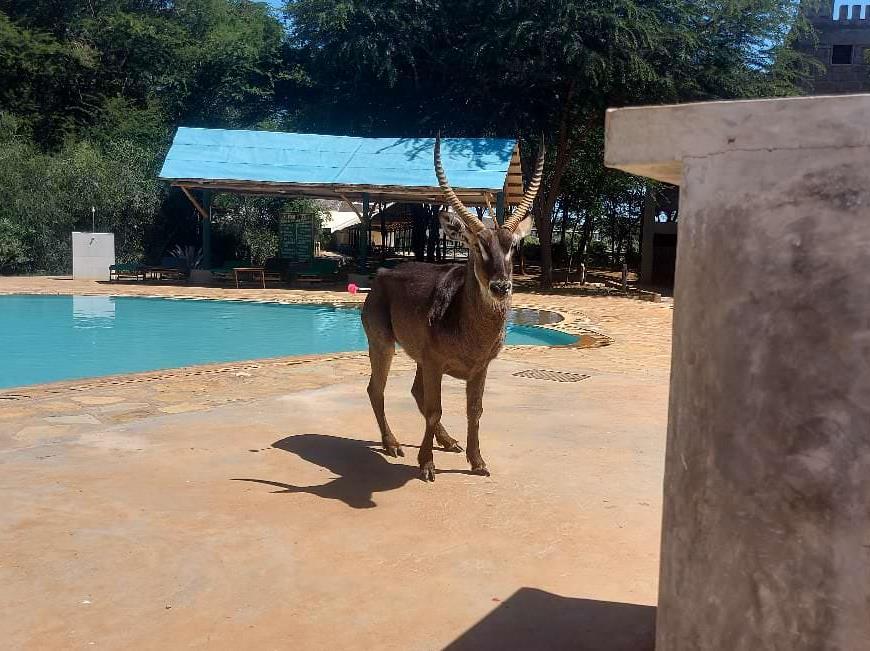



Case 12 – 29th April 2024
















































